Exit strategies are crucial for business owners to ensure a smooth transition of ownership or dissolution of their business. Planning for an exit strategy is vital as it helps owners to maximize the value of their business, minimize taxes, and achieve their personal and financial goals. The choice of an exit strategy depends on various factors, including the business's size, industry, financial performance, and the owner's personal objectives.
Liquidation refers to the process of selling off a business's assets and using the proceeds to pay off its debts and liabilities. This strategy is often considered when a business is struggling financially or when the owner wants to retire or move on to another venture. The following table shows the pros and cons including the suitability of liquidation as an exit strategy. Selling a business involves transferring its ownership to a new party in exchange for monetary compensation. The sale can take various forms, such as an asset sale, stock sale, or merger/acquisition. An asset sale involves selling individual assets of a business, such as equipment, inventory, and intellectual property. A stock sale involves transferring the ownership of the business's shares to a new owner. In a merger or acquisition, the business is combined with another company, typically a larger one, and the owner may receive cash, shares, or a combination of both. To find the right buyer, business owners should consider the following factors: Compatibility with the business's values and culture Financial capability Reputation and track record An MBO occurs when a company's management team purchases the business from its current owner. This strategy is suitable when the owner wishes to retire or pursue other opportunities, and the management team is capable of running the business. The table below shows the pros and cons of MBO including the factors to consider when choosing this strategy. An Employee Stock Ownership Plan (ESOP) is a strategy that involves transferring ownership of a business to its employees through a trust. This allows employees to acquire shares in the company, and the owner gradually exits the business. The table below shows the pros and cons of ESOP including the factors to consider in this strategy. An Initial Public Offering (IPO) is the process of offering a company's shares to the public for the first time. This strategy is suitable for businesses with strong financial performance and growth potential. The table below shows the pros and cons of IPO including the suitable scenarios for such strategy. Family succession involves transferring the ownership and management of a business to family members, typically the next generation. The table below shows the pros and cons of family succession including the factors to consider in this strategy. Choosing the right time to exit a business is crucial for maximizing its value and ensuring a smooth transition. Factors to consider include: Market conditions Business performance Personal goals and readiness A proper business valuation is essential to determine the fair market value of a company. Various methods can be used, such as: Asset-based approach Income-based approach Market-based approach Preparing for an exit strategy involves addressing legal and financial aspects, such as: Ensuring compliance with regulations Resolving outstanding liabilities Updating financial records To maximize the value of a business, owners should focus on enhancing its attractiveness to potential buyers, including: Streamlining operations Increasing profitability Building a strong management team A well-crafted transition plan is essential to ensure a smooth transfer of ownership and minimize disruptions. Key components of a transition plan include: Timeline for the exit process Roles and responsibilities of stakeholders Training and support for the new owner or management team Working with professional advisors can help navigate the complexities of the exit process. Key advisors include: Lawyers Accountants Business brokers Investment bankers Negotiating favorable terms and conditions is crucial for maximizing the value of the exit. Key aspects to consider include: Sale price Payment terms Non-compete agreements Warranties and indemnities The due diligence process allows potential buyers to verify the accuracy of the information provided by the seller. Key aspects of due diligence include: Financial review Legal review Operational review Closing the deal involves finalizing the terms and conditions, signing legal documents, and transferring ownership. Key steps include: Reviewing and approving final documents Ensuring all conditions are met Receiving payment and transferring ownership Exiting a business may have tax implications, and proper financial planning is essential to minimize the tax burden and maximize the owner's financial well-being. Non-compete agreements can be part of the exit strategy to protect the new owner and ensure a smooth transition. The terms of such agreements should be clear and reasonable. The exiting owner may continue to play a role in the business after the exit, such as serving as a consultant or board member. This should be clearly defined and agreed upon with the new owner. Exiting a business can have emotional and psychological effects on the owner. It is essential to prepare for this transition and seek support from friends, family, or professional counselors. A well-planned exit strategy is essential for business owners seeking a smooth transition and maximum value from their business. Key points to emphasize include considering factors such as financial performance, personal goals, and industry conditions when choosing the right exit strategy. Some business exit strategies to consider are liquidation, selling the business, management buyouts, employee stock ownership, IPOs,. and family succession. Preparation involves timing, valuation, legal and financial preparations, enhancing business attractiveness, and developing a transition plan. Execution requires engaging professional advisors, negotiating terms, conducting due diligence, and closing the deal. Post-exit considerations include tax and financial planning, non-compete agreements, defining the owner's role, and addressing emotional and psychological impacts. By carefully considering these key points and implementing a comprehensive exit strategy, business owners can secure their legacy and achieve their personal and financial goals.Exit Strategy Overview
Types of Business Exit Strategies
Liquidation
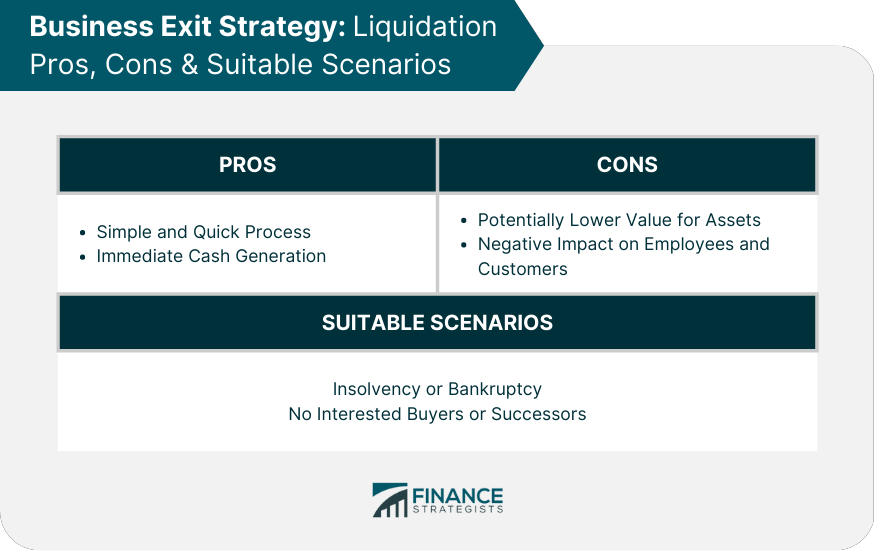
Selling the Business
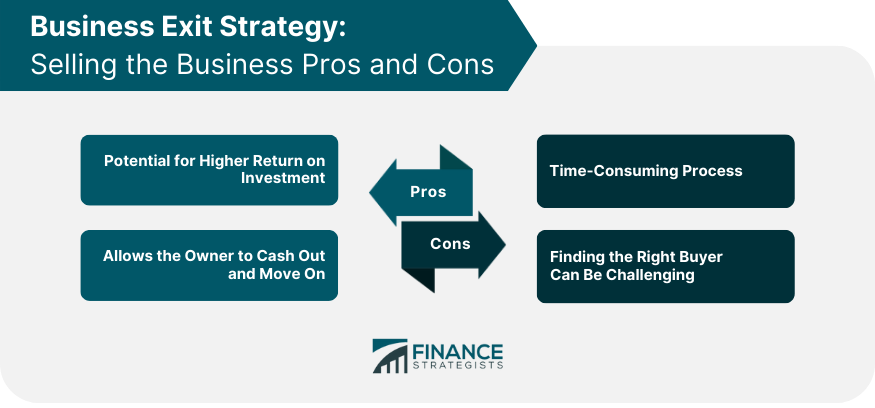
Types of Sale
Asset Sale
Stock Sale
Merger or Acquisition
Finding the Right Buyer
Management Buyout (MBO)
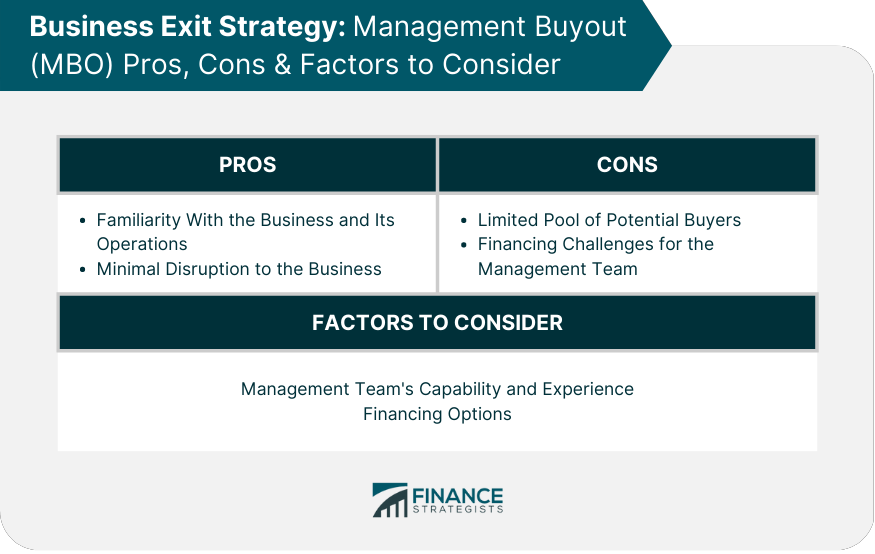
Employee Stock Ownership Plan (ESOP)
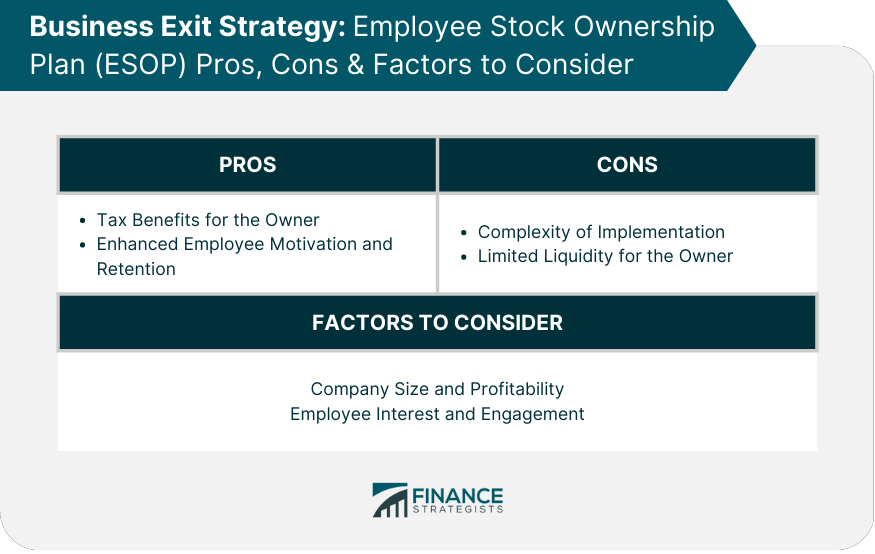
Initial Public Offering (IPO)
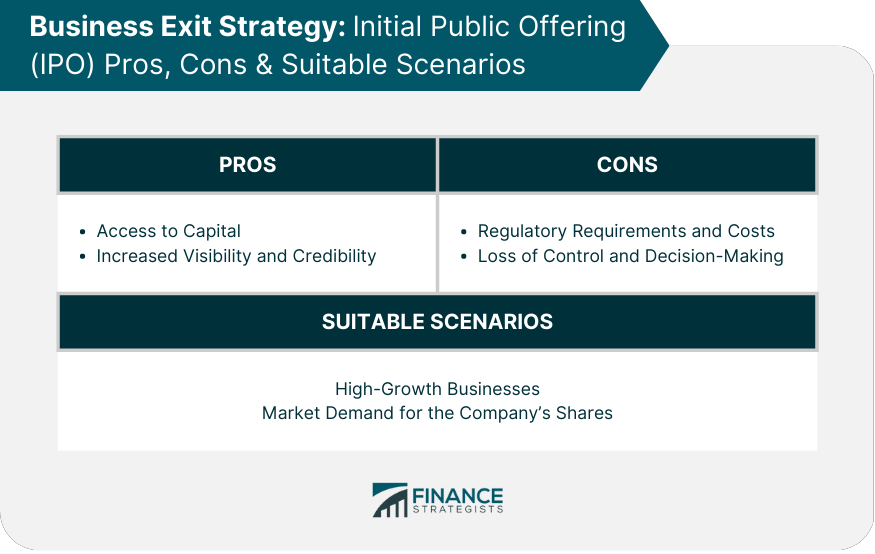
Family Succession
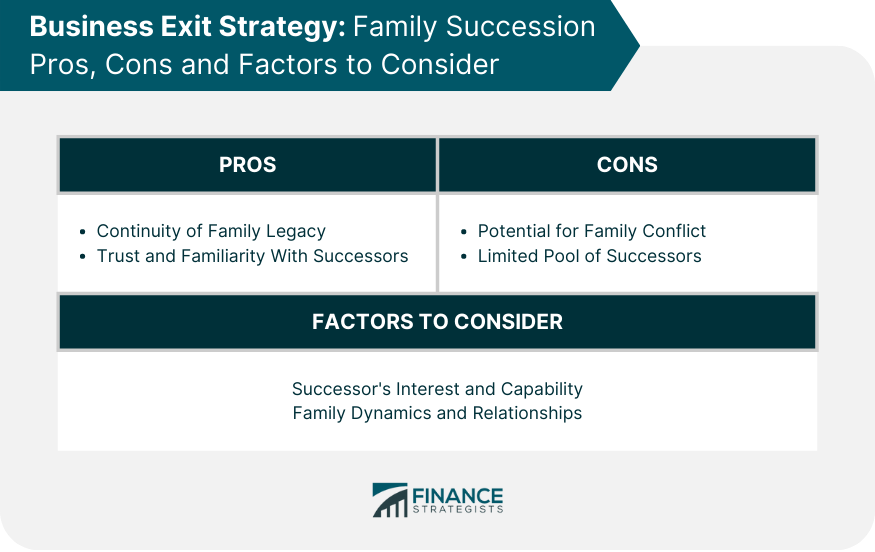
Preparing for an Exit Strategy
Timing Considerations
Business Valuation
Legal and Financial Preparations
Enhancing Business Attractiveness
Developing a Transition Plan
Execution of the Exit Strategy
Engaging Professional Advisors
Negotiating Terms and Conditions
Due Diligence Process
Closing the Deal
Post-Exit Considerations
Taxes and Financial Planning
Non-Compete Agreements
Business Owner's Role Post-Exit
Emotional and Psychological Impact
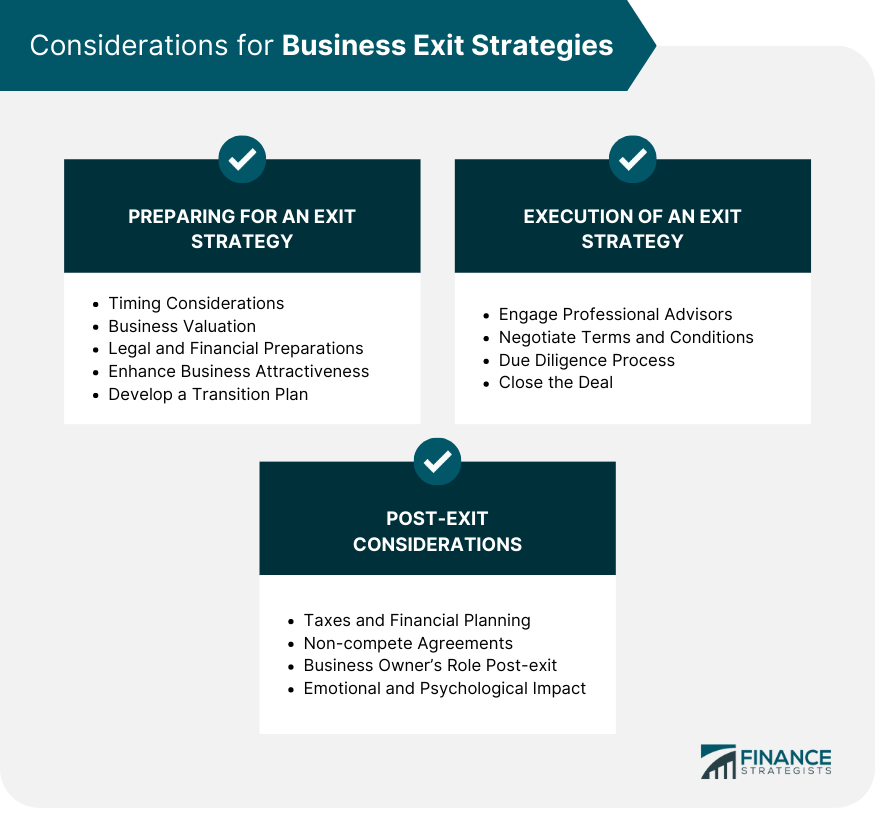
Conclusion
Business Exit Strategies FAQs
Business exit strategies are plans put in place to help business owners leave their companies, either by transferring ownership or dissolving the business.
Some common business exit strategies include selling the company to another party, transferring ownership to family members or employees, going public through an initial public offering (IPO), or liquidating assets and closing the business.
Having a business exit strategy is important because it provides a clear path for the owner to exit the business on their own terms, while also ensuring the future success of the company.
It is recommended that business owners start planning their exit strategy at least 3-5 years before they plan to exit the business. This allows for ample time to prepare the business for a successful transfer of ownership.
A professional, such as a business broker, lawyer, or financial advisor, can provide valuable expertise and guidance in developing and implementing a successful business exit strategy. They can also help navigate legal and financial considerations associated with the exit process.
True Tamplin is a published author, public speaker, CEO of UpDigital, and founder of Finance Strategists.
True is a Certified Educator in Personal Finance (CEPF®), author of The Handy Financial Ratios Guide, a member of the Society for Advancing Business Editing and Writing, contributes to his financial education site, Finance Strategists, and has spoken to various financial communities such as the CFA Institute, as well as university students like his Alma mater, Biola University, where he received a bachelor of science in business and data analytics.
To learn more about True, visit his personal website or view his author profiles on Amazon, Nasdaq and Forbes.











